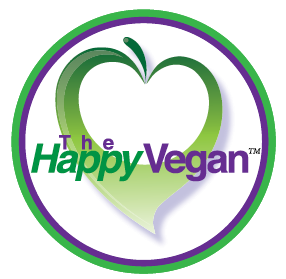What You Should Know About Juicing vs. Blending
Do you know the difference between juicing and blending? Does it really matter? Which is better for your health?
Some people, possibly those selling a particular product, may argue and choose one over the other. But as the old saying goes, you can’t compare apples to oranges – which is basically what we are doing if we try to compare these two different methods. There are a lot of differences between the two methods that we will discuss below, but they both support enhancing your intake of fruits and veggies; and no one (in their right mind at least!) can argue the health benefits of proper nutrition!
Read on to learn the differences so that you can make the educated decision about which is better for your body and your specific needs. Perhaps a combination of both will be best for you. It all depends. Me, I prefer juicing…and you’ll see why in a bit. That doesn’t mean that I don’t think making smoothies in the blender is a bad thing; it just isn’t my preference!
Let’s start with the basics and define “juicing” and “blending”. First, different machines are used for juicing and blending and you’ll want to understand the semantics (that is, if you want to sound like you know what you are talking about when discussing juicing and blending at your next social gathering!).
A juicer is used to create “juice” (I know, this is a tough concept to grasp…so stay with me Sherlock!) Now here is where it isn’t so obvious…a blender is used to create “smoothies”. Two different machines, two different drinkable nutritious concoctions.
While there are 3 common types of juicers used in households (a centrifugal, single gear/masticating and twin gear juicer), here is the juicer that I use – a twin gear machine called the Super Angel:
And here is the blender I use – a Vitamix Pro 750:
Clearly they are different looking machines, and their output is completely different too. Let’s talk about those differences now…
“Juicing” is a specific term that refers to the extraction of juice at very low speeds (my Super Angel juicer operates at only 80 RPM) to minimize oxidation from fresh fruits and vegetables to create a drinkable cocktail of vitamins, minerals, and phytonutrients. Juicing extracts the liquid (the heart and soul) from vegetables and fruits leaving the fiber in the catch bucket of the juicer (i.e. the stuff you can add to your compost pile!) That’s a key point about juicing – it removes the fiber from the juice which allows for fast and easy absorption of nutrients. In whole fruits & vegetables, some enzymes, phytochemicals, vitamins A, C & E – along with minerals like iron, copper, potassium, sodium, iodine & magnesium – are trapped in the indigestible fiber and cannot be assimilated by the body. But once freed from the cellulose in the pulp, those nutrients can be taken into the cells of the body within 15 minutes (vs. 1 hour+ with the pulp intact). This saves the energy required for digestion and allows the body to rest while detoxifying or cleansing, before or after physical activity, or while recovering from an illness. Think of it as a healthy rest for your digestive system! And who couldn’t use a good rest now and then?
Blending on the other hand liquefies, typically at high speeds (my Vitamix operates at 35,000 RPM!) the solid ingredients, keeping the fiber intact, but making it drinkable. The resulting drink of pureed fruits & veggies is referred to as a “smoothie” that still contains the good fiber and provides the nutritional benefits of the ingredients. If you plan to have a lot of fruits in your drink (careful, the rule of thumb is to use a 3:1 ratio of veggies to fruits), then a smoothie provides the fiber to slow down the absorption of the natural sugars in the bloodstream. Also, if you plan to add superfood powders or things like sprouts, your juicer won’t handle that well but your blender will.
Advocates for juicing claim it’s a fast and convenient way to get nutrients into our bodies, while opponents argue we miss out on important health benefits from the nutrient-rich skin and fiber that is extracted during the processing. My personal feeling is that I get plenty of fiber from other foods I enjoy in my diet. But for someone lacking fiber, smoothies may be the way to go (literally!) I’ll save the discussion about poop for a later blog!
So now here is my final answer: both juicing and blending are good ways to get necessary nutrients. Getting GREENS into your diet in any way is better than no way. I personally don’t like the consistency of smoothies and I don’t like frozen or really cold drinks. So for me, juicing is best. But it’s not about me…it’s about you and what works for your needs. Go green and get juicing or blending (or both!).
I hope this blog has given you something to drink about 🙂 … stay tuned for more discussions about juicing and blending. In the meantime, please enjoy my favorite daily green juice…
Sharon’s favorite juice recipe (always wash your produce well and use organic when possible!):
- 3 – 4 large handfuls of spinach
- 2 cucumbers, peeled
- 1 lime, peeled
- 1 apple, peeled
- 1 large piece of ginger, peeled (I love the heat from the ginger so I add about a 3” piece)
- Small handful of wheatgrass (if available)
Thanks for veggin’ out with me!
Yours Truly in Health & Compassion,
The Happy Vegan











Leave a Reply
Want to join the discussion?Feel free to contribute!